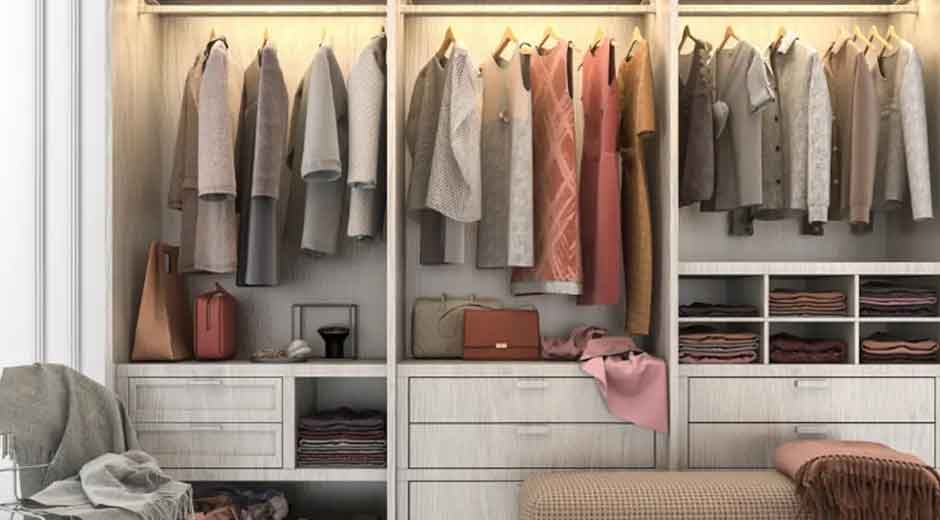Time-Saving Closets: How Smart Design Cuts Clutter and Stress

Living in a world where time seems to slip away faster than ever, an organized and efficient home environment has become more important. The chaos of clutter can chip away at mental peace and increase daily stress, especially when it involves something as routine as getting dressed, storing belongings, or searching for essentials. Closets often become a major source of this stress when they are poorly designed or overcrowded. Fortunately, smart closet design offers a practical way to regain control of time and space. We will explore how intentional closet planning minimizes clutter and supports smoother routines and a more relaxed lifestyle. From functional layout choices to smart storage solutions, the modern closet is no longer a simple storage area—it contributes to daily wellness and productivity.
Smart Design Choices That Transform Everyday Routines
- Layout Efficiency That Supports Daily Habits
A closet’s layout directly impacts how quickly and easily someone can find and access their belongings. A smartly designed closet places priority items—such as everyday clothing, accessories, and shoes—at arm’s reach. Seasonal items and infrequently used possessions are stored higher up or in designated compartments. For instance, built-in dividers and multiple hanging rods can create distinct zones for formal wear, casual outfits, and outerwear. This segmentation simplifies decisions, reduces mental fatigue, and speeds up dressing in the morning. Many homeowners have turned to custom closets in Bradenton for layout solutions that align closely with their daily routines and storage needs, allowing for seamless organization that makes every morning easier.
A time-saving closet layout is tailored to the user’s lifestyle, ensuring the most-used items are in the most accessible spots. When done correctly, this eliminates unnecessary rummaging and encourages consistent tidying. Incorporating open shelving for folded garments or labeled drawers for small accessories contributes further to this goal. By thoughtfully organizing layout zones based on frequency of use, individuals spend less time sorting and more time enjoying their day.
- Customized Storage for Unique Needs
Closets should be as personal as the individuals using them, and customization is a powerful tool in creating systems that save time. A one-size-fits-all shelving system often leads to wasted space or inefficient storage. On the other hand, adjustable shelves, pull-out drawers, and modular compartments adapt to specific needs—whether someone has a large shoe collection, an abundance of handbags, or suits that need to remain wrinkle-free. Children’s closets, for example, can be designed with low drawers and open shelves for independence and accessibility. In contrast, adult closets might benefit from tie racks, jewelry trays, or built-in laundry hampers.
By aligning closet design with specific wardrobe habits, users avoid overcrowding and improve visibility of what they already own. This prevents repeat purchases and encourages more frequent use of the full wardrobe. The result is a cleaner space, more efficient mornings, reduced wardrobe confusion, and quicker decision-making.
To further enhance your storage setup, consider searching for “best chest of drawers” or “custom closet storage solutions”. These search terms can help you discover functional and stylish pieces that complement your closet layout while providing extra space for folded items, accessories, or seasonal clothing.
- Lighting That Enhances Function and Visibility
Lighting is often overlooked in transforming a closet from a dark, frustrating corner into a bright, functional space. Poor lighting leads to misplaced items, difficulty distinguishing between colors or fabrics, and wasted time navigating shadows. Incorporating LED strip lights under shelves, motion-sensor lighting, or overhead fixtures can dramatically enhance the closet experience. Choosing outfits becomes less time-consuming and more enjoyable when every item is clearly visible.
Additionally, lighting creates a sense of order and cleanliness, encouraging users to maintain the system they’ve set up. A well-lit closet also supports the function of mirrors, making it easier to evaluate outfits and accessories without leaving the room. In multi-use closets that double as dressing areas or laundry storage, proper illumination helps organize tasks efficiently. Investing in lighting is more than an aesthetic upgrade—it’s a practical choice contributing to daily time-saving routines and reduced visual clutter.
- Decluttering Systems That Maintain Order
Smart closet design goes hand in hand with consistent organization, which means creating systems that naturally promote decluttering. Features like labeled bins, built-in hampers, designated drop zones for belts or scarves, and even color-coded hangers reinforce long-term order. These systems reduce decision fatigue and provide clear guidance for where things belong, encouraging daily maintenance without much thought. One effective design strategy is incorporating a “rotating section” in the closet for weekly or seasonal rotations—this allows the user to keep the main closet space minimal and focused only on what’s currently needed.
Another helpful feature is a donation bin or purge drawer integrated into the closet layout, which offers a convenient way to let go of unused items without disrupting the rest of the space. Over time, these systems lead to a natural rhythm of reassessment and refinement. The result is a space that stays tidy and evolves with changing needs, ensuring the closet remains a time-saving asset.
Incorporating time-saving elements into closet design is more than a luxury—it’s a lifestyle shift that enhances daily function and reduces stress. From tailored layouts to visibility-enhancing lighting, every aspect of a thoughtfully planned closet contributes to streamlining routines and eliminating clutter. The key is creating systems that are easy to maintain and uniquely suited to each user’s habits. Reclaiming even a few minutes daily through better organization can lead to greater peace of mind and more control over our time as we move through busy lives. With the right design approach, closets become a foundation of calm, order, and efficiency in the home.

